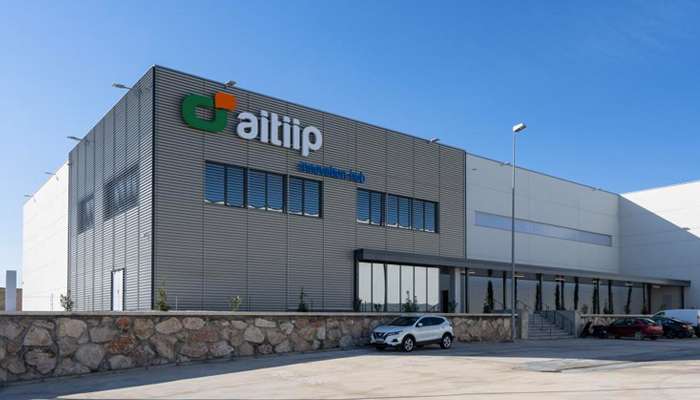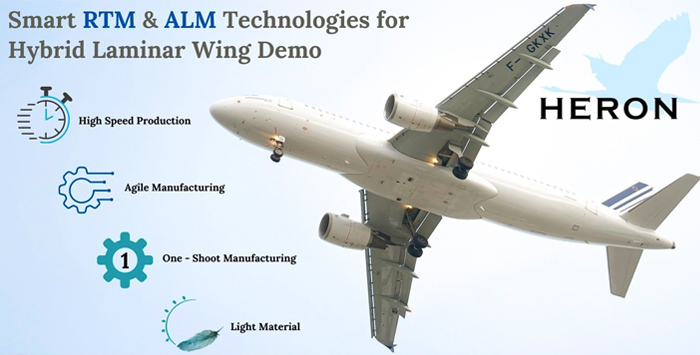Aitiip Leads The HERON Project to Improve Energy Efficiency in Aeronautics

Zaragoza-based Aitiip Technology Center has taken the reins of the European HERON project. The idea came about as a result of the European commitment to the environment—more specifically, due to carbon emissions from the aeronautics industry. Thus, the primary mission of this initiative is to execute change in the production systems in this sector, which is currently one of highest contributors of CO2 emissions in the atmosphere worldwide. This is where Aitiip comes in, the organization that is committed to developing a suite of innovative technological solutions in order to manufacture the necessary tooling to deliver on the mission’s objectives. These tools will later be used to manufacture, among other things, an airplane wing demonstrator that will be more environmentally friendly.
As of late, additive manufacturing and sustainability are two concepts that go hand-in-hand. It has been proven many times that 3D technology, in terms of environmental sustainability, is several fold more traditional manufacturing methods. This can be seen in the reduction in production times and materials, since only the necessary amount is used, as well as in the low emission of gases during the process. Even so, there is still much to do in terms of sustainability and even more so in the aeronautical industry. In fact, according to data from the European Union itself, air transport represents about 2% of the 36 billion tons of CO2 generated per year by human activity. That is why 3D printing has also played a leading role in the HERON project which, thanks to the solutions of the Aitiip technology center, intends to change these figures.

The Aitiip technology center leads the HERON project together with other European organizations.
What is the HERON project?
Funded by the European Commission with almost 1 Million euros, the HERON project focuses on the development of tools for the aircraft wing. The three parts to be manufactured are the leading edge, the torsion box, and the trailing edge. The final goal is to make the production processes in aeronautics profitable by adopting the circular economy throughout the value chain. But how is this achieved? The collaborating organizations of the project intend to develop a set of advanced and intelligent technologies that combine hybrid additive manufacturing and high precision machining processes.
The resulting tools will enable the improvement of the aerodynamic and kinematic parameters of the moving wing, and therefore the airplane will consume less fuel. The project could reduce CO2 emissions by 30%. As we can see, the HERON project methodology is based on several key strategic axes. Now it only remains to see how these initiatives develop and how cutting-edge technologies are implemented in the final process. Meanwhile, you can find more information HERE.

Photo Credit: HERON Project
What do you think of this week’s selection of 3D printing videos? Let us know in a comment below or on our Facebook and Twitter pages. Don’t forget to sign up for our free weekly newsletter, with all the latest news in 3D printing delivered straight to your inbox!






